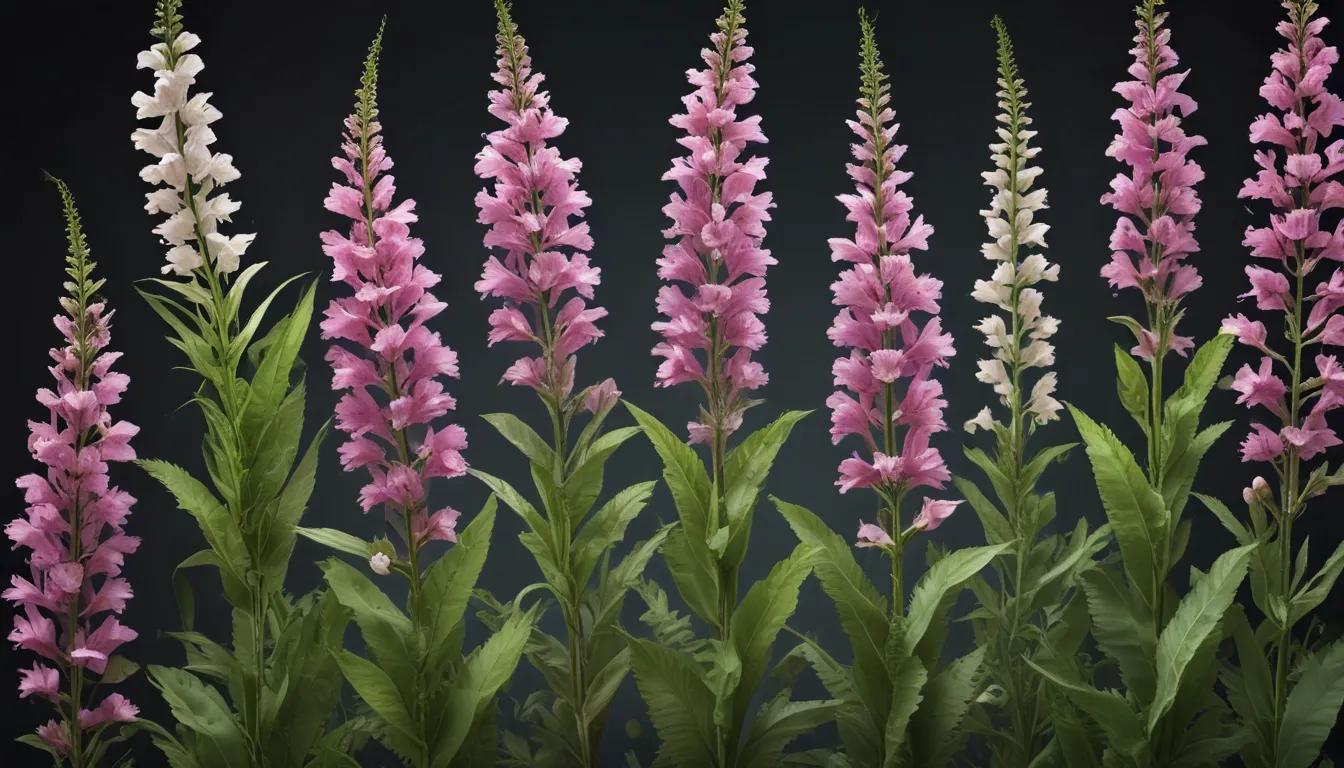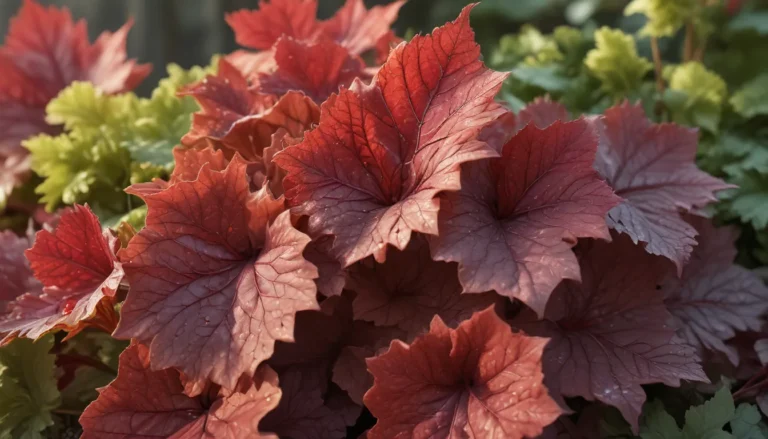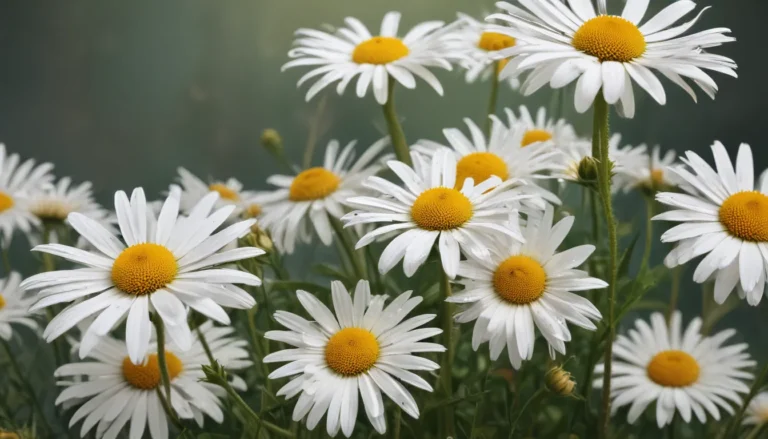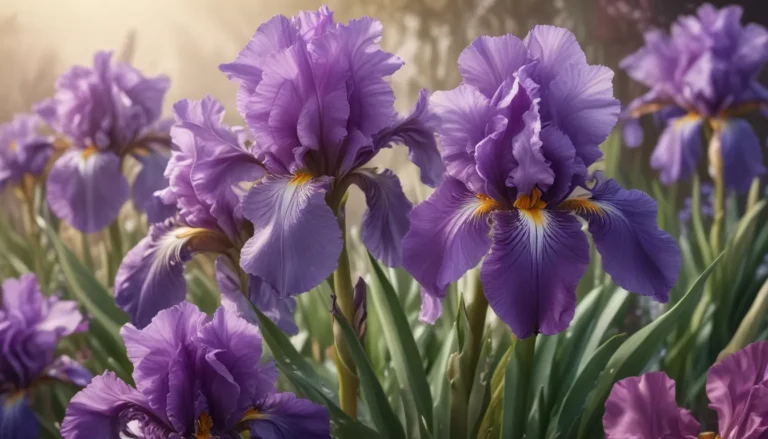The pictures we use in our articles might not show exactly what the words say. We choose these pictures to make you interested in reading more. The pictures work together with the words but don’t take their place. The words still tell you the important facts.
Welcome to the enchanting world of the Obedient Plant, scientifically known as Physostegia virginiana. This captivating plant has piqued the interest of gardeners and nature enthusiasts alike with its unique ability to sway and bend in response to human touch or a gentle breeze. But beyond its mesmerizing movements lies a wealth of fascinating facts waiting to be explored.
In this article, we will unravel the mysteries of the Obedient Plant and unveil nineteen captivating facts that will broaden your horizons about this extraordinary botanical wonder. From its historical significance in Native American medicine to its exquisite display of flowers, the Obedient Plant has a rich and intriguing story to share.
So, sit back, relax, and prepare to be amazed by the enchanting world of the Obedient Plant!
Delving Into the World of the Obedient Plant:
The Myth of Obedience:
Contrary to its name, the Obedient Plant does not possess any inherent obedience. Instead, it derives its name from the unique characteristic of its flower spikes, which can be gently coerced into maintaining an upright position. This fascinating feature adds an element of charm to any garden.
A Native Beauty:
The Obedient Plant is a native perennial herb that thrives in the eastern and central regions of North America. It flourishes in moist environments such as wet meadows, marshes, and stream banks, showcasing its adaptability to diverse habitats.
A Pollinator’s Paradise:
Bees, butterflies, and other pollinators flock to the alluring flowers of the Obedient Plant. With its tubular-shaped blossoms in shades of pink and purple, this plant serves as a sanctuary for pollinators, offering a rich source of nectar and enhancing any pollinator garden.
Late Blooms of Splendor:
One of the Obedient Plant's distinctive features is its late-season blooming. From late summer to fall, the plant showcases tall, elegant flower spikes that continue to grace the garden with color and beauty long after other plants have ceased blooming.
Minty Freshness:
Belonging to the mint family, Lamiaceae, the Obedient Plant shares characteristics such as aromatic foliage, square stems, and the bilateral symmetry of its flowers. Its minty lineage adds an extra layer of charm to this captivating plant.
Welcome Hummingbirds:
Hummingbirds are frequent visitors to gardens featuring the Obedient Plant. The plant's tubular flowers and abundant nectar act as a magnet for these vibrant and lively birds, bringing an additional splash of color and joy to any landscape.
Unveiling the Beauty of the Obedient Plant:
Visual Delights:
The lance-shaped leaves of the Obedient Plant are arranged oppositely along the stem, boasting a rich green hue and a slightly serrated edge that enhances its visual appeal. These leaves contribute to the plant's overall aesthetic charm.
Vigorous Spread:
While the Obedient Plant adds beauty to gardens, it has a propensity to spread rapidly. Its rhizomatous root system allows it to form large clumps over time, necessitating vigilance in managing its growth to prevent it from overpowering other plants in the garden.
Soil Savvy:
Known for its adaptability, the Obedient Plant thrives in a wide range of soil conditions, from moist to dry, as long as it is well-drained. This versatility makes it a versatile choice for various garden settings, adding a touch of elegance to any landscape.
Floral Elegance:
The Obedient Plant's tall flower spikes make it a popular choice for cut flower arrangements. Its long-lasting blooms and unique structure bring height and interest to floral displays, captivating the eyes of all who behold them.
Propagation Possibilities:
The Obedient Plant can be propagated from both seeds and rhizomes. Seeds can be gathered from mature flower spikes, while rhizomes can be divided and replanted to create new plants, offering gardeners multiple avenues for propagation.
Caring for the Obedient Plant:
Effortless Elegance:
For gardeners seeking a low-maintenance plant, the Obedient Plant is an excellent choice. Once established, it is relatively drought-tolerant and does not require frequent fertilization or pruning, simplifying care routines for busy gardeners.
Sturdy and Strong:
The robust stems of the Obedient Plant are one of its standout features. Resilient against wind and rain, these stems ensure that the flower spikes remain upright and visually appealing, adding a touch of durability to its delicate beauty.
Natural Companions:
The Obedient Plant attracts beneficial insects like ladybugs and lacewings, contributing to natural pest control in the garden. Strategically planting it alongside vegetables or other susceptible plants helps establish a harmonious balance in the garden ecosystem.
Deer Deterrence:
One of the advantages of cultivating the Obedient Plant is its resistance to deer browsing. Compounds within the plant make it unappealing to deer, making it an ideal choice for gardens in areas with high deer populations.
Medicinal Marvel:
Native American tribes have utilized various parts of the Obedient Plant for medicinal purposes. The roots were traditionally employed to alleviate stomachaches, while the leaves were topically applied to treat skin conditions, highlighting its medicinal significance.
Embracing the Obedient Plant:
Floral Finesse:
When incorporated into floral arrangements, the Obedient Plant's unique flower spikes steal the show. Its architectural beauty and ability to provide vertical interest make it a favorite among florists and garden enthusiasts, enhancing any floral display with its captivating presence.
Beneficial Inhabitants:
In addition to attracting bees and butterflies, the Obedient Plant draws beneficial insects like predatory wasps and hoverflies to the garden. These insects aid in controlling pests, fostering a healthier and more balanced ecosystem for all garden inhabitants.
The Obedient Enigma:
True to its namesake, the Obedient Plant features flowers that can be gently repositioned and will obediently hold their new stance, an intriguing behavior that adds to the plant's allure and charm.
As you uncover these nineteen captivating facts about the Obedient Plant, you will develop a deeper appreciation for its exceptional qualities and may consider introducing it to your own garden. Whether you are drawn to its vibrant blooms, its pollinator-attracting properties, or its effortless care requirements, the Obedient Plant promises to elevate the beauty and allure of any landscape.
So, why not embrace this enchanting plant and create a garden that captivates both you and nature with the alluring presence of the Obedient Plant?
In Conclusion:
The Obedient Plant, also known as Physostegia virginiana, is a plant of mystery and wonder, boasting a myriad of unique qualities that make it a captivating addition to any garden. From its mesmerizing flower behavior to its historical medicinal uses, the Obedient Plant holds a special place in the hearts of gardeners and nature lovers alike. So, the next time you encounter this remarkable plant, take a moment to admire its extraordinary features and reflect on the intriguing facts that make it truly exceptional.
Frequently Asked Questions:
-
What is an obedient plant?
An obedient plant, or Physostegia virginiana, is a perennial flowering plant native to North America, named for its versatile blossoms that can be positioned and maintained in various directions. -
How does the obedient plant get its name?
The obedient plant derives its name from its unique ability to have its blossoms moved and positioned in different directions. Gently pushing or bending the flowers enables them to hold their new position. -
What are the characteristics of the obedient plant?
The obedient plant features lance-shaped leaves, dense spikes of tubular flowers in hues of pink and purple, and a clumping growth habit that makes it an excellent choice for borders or wild gardens. -
How do you care for an obedient plant?
Obedient plants thrive in full sun to partial shade and prefer well-draining, moist soil. While they are relatively low-maintenance, staking may be needed to support their tall stems. Regular watering and occasional fertilization help maintain their health. -
Are obedient plants invasive?
While obedient plants are clump-forming and not typically considered invasive, they can spread aggressively under certain conditions. Monitoring their growth and providing proper maintenance can help prevent them from overrunning your garden. -
Are obedient plants beneficial to pollinators?
Yes, obedient plants are attractive to bees, butterflies, and other pollinators due to their vibrant flowers and rich nectar content. Including them in your garden can enhance pollinator activity and biodiversity. -
Can obedient plants be used medicinally?
Obedient plants have a history of medicinal use among Native American tribes. Various plant parts were utilized to treat respiratory and digestive ailments, showcasing their traditional medicinal significance. Consult a healthcare professional before using them medicinally. -
Can obedient plants be grown from seeds?
Yes, obedient plants can be grown from seeds. Plant the seeds in prepared soil or seed trays indoors, ensuring consistent moisture. Watch for seedlings to emerge within a few weeks as you nurture them into robust plants. -
Can obedient plants tolerate drought?
While preferring moist soil, obedient plants can withstand periods of drought once established. However, prolonged drought stress may lead to wilting and reduced flowering. Providing regular watering during dry spells is recommended. -
Can I divide and propagate obedient plants?
Yes, obedient plants can be divided and propagated, with early spring or late fall being ideal times for this activity. Dividing the plant clumps, replanting them in well-prepared soil, and nurturing their growth can expand your collection of obedient plants.
Through these engaging facts and insightful information, your understanding of the Obedient Plant has expanded, inviting you to embrace the allure and magic of this extraordinary botanical wonder. Whether you are a seasoned gardener or a curious nature enthusiast, the Obedient Plant beckons you to explore its captivating world and witness its remarkable beauty firsthand.






